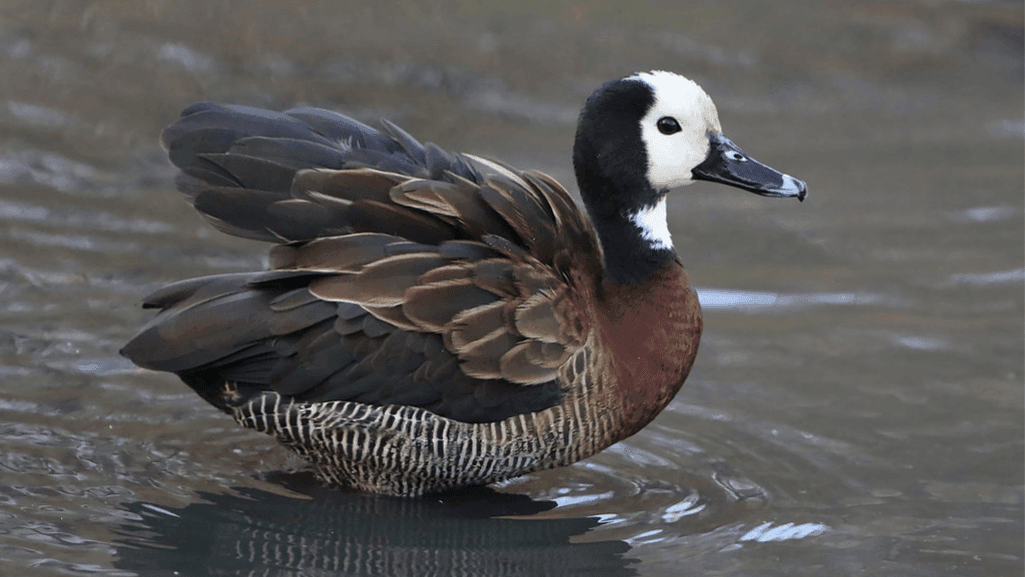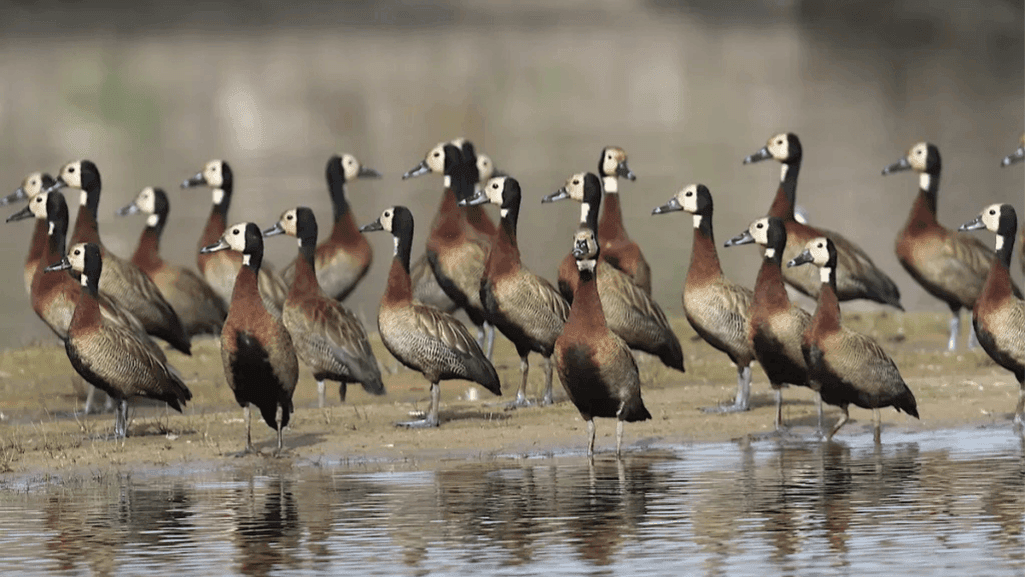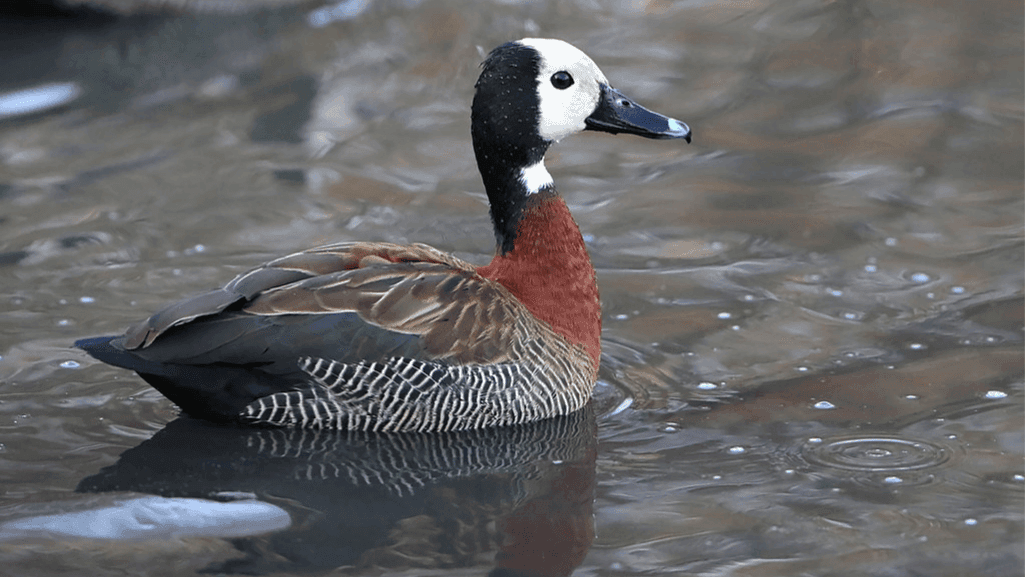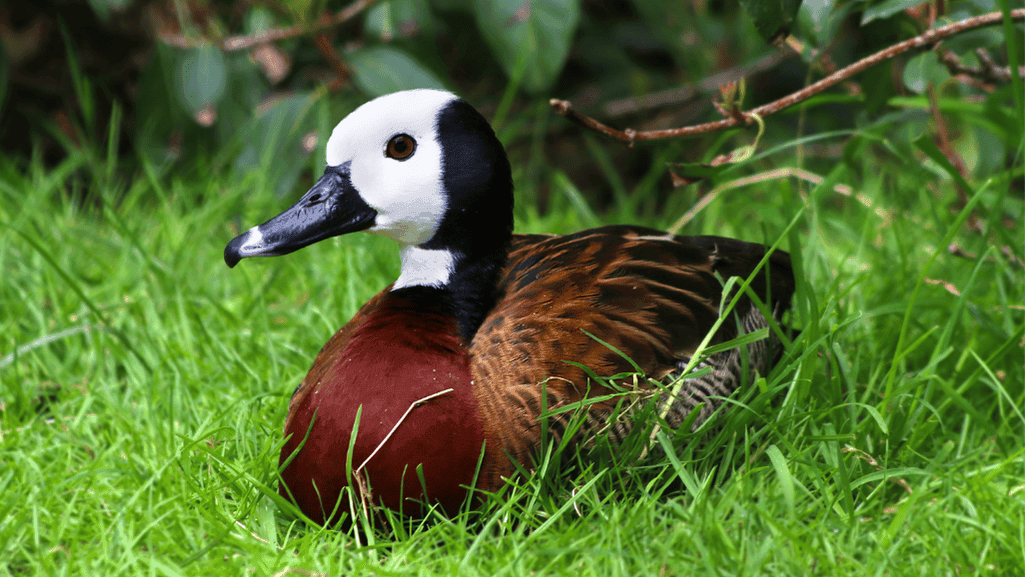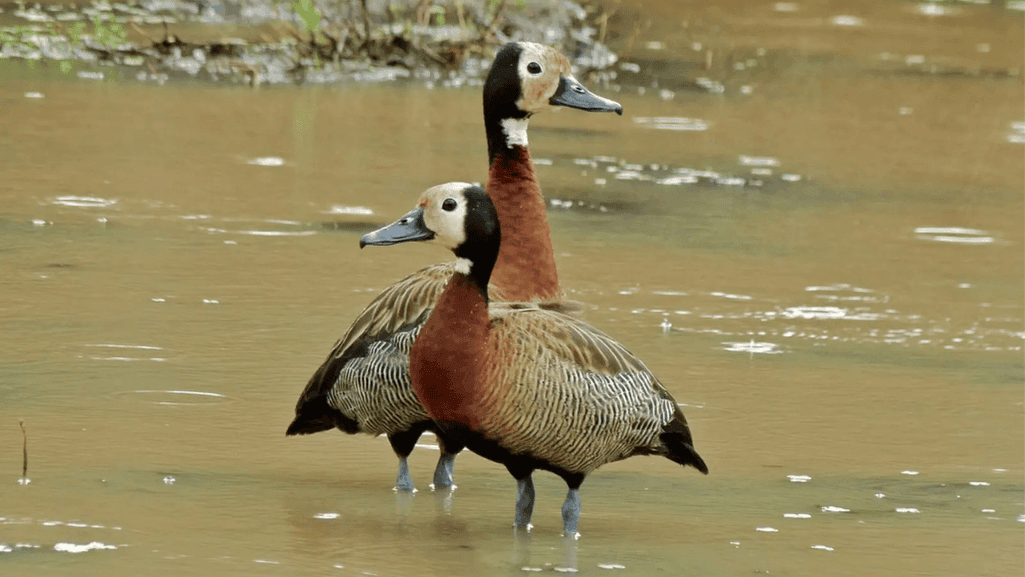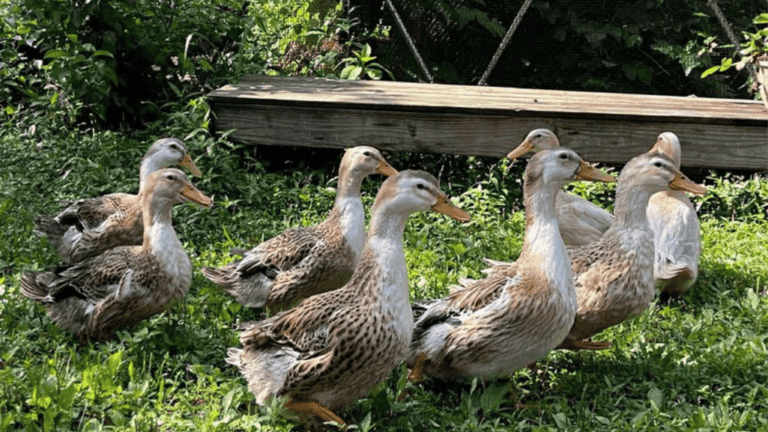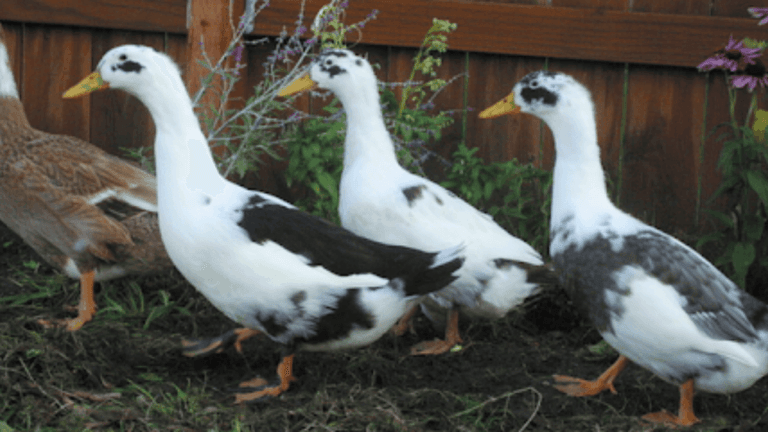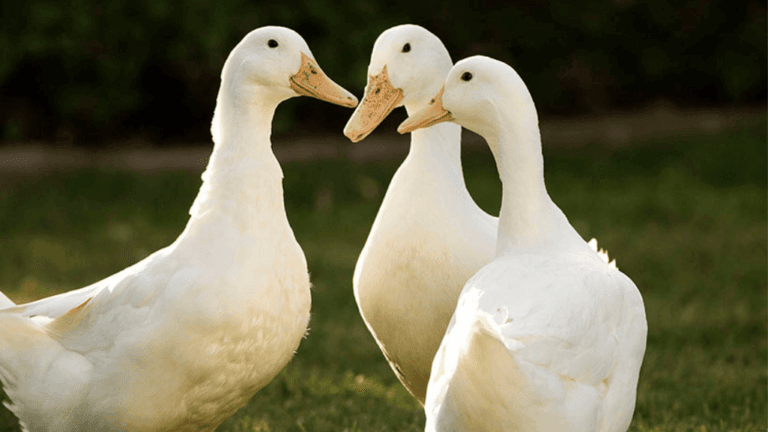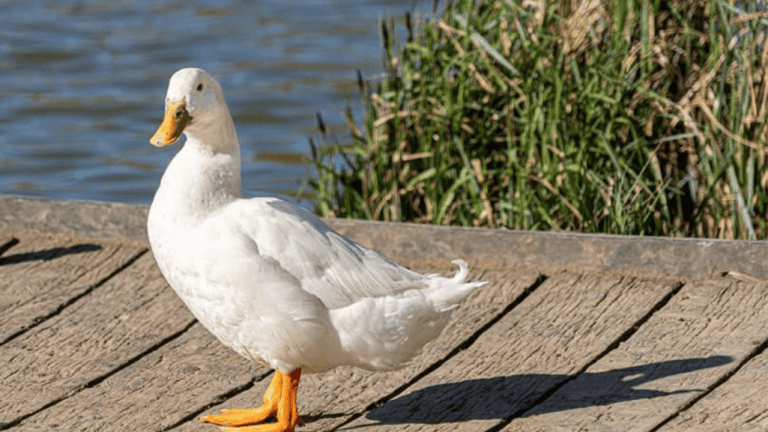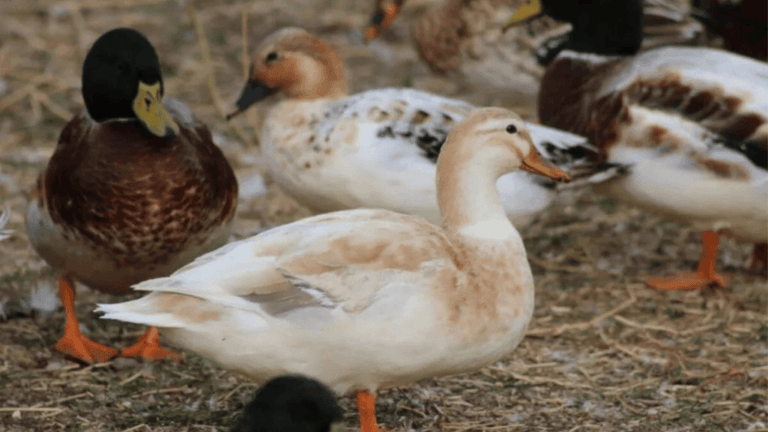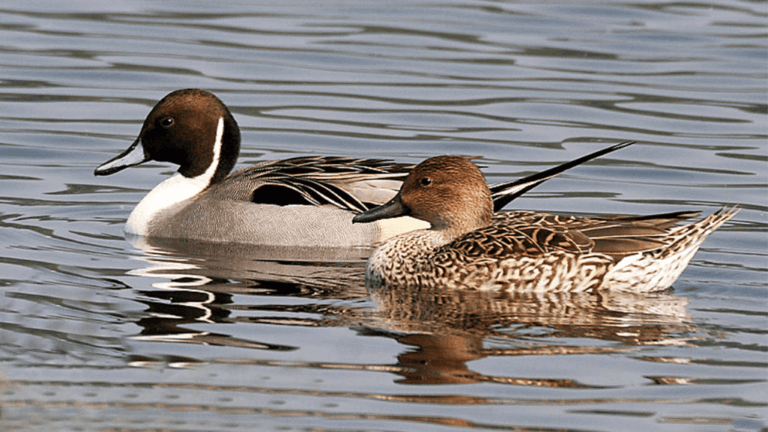Get ready to fall in love with the White-Faced Whistling Duck. This tropical waterfowl is famous for its unique call and beautiful look. They make a high-pitched, three-note whistle that fills their homes in sub-Saharan Africa and South America.
With about 2.8 million worldwide, these ducks are a hit among bird lovers. Their charm and beauty make them a favorite among many.
Let’s dive into the world of the White-Faced Whistling Duck. They have interesting habits and ways of living. They even perch in trees and work together as a family.
They love places like freshwater lakes, marshes, and rice paddies. Their diet is varied, including grasses, seeds, plants, and small bugs.
Key Takeaways:
- White-Faced Whistling Ducks are known for their distinctive, high-pitched, three-note whistle.
- These tropical waterfowl have a striking appearance, with a white face, black head, and chestnut lower neck.
- They are highly social, often gathering in flocks of several thousand outside of the breeding season.
- White-Faced Whistling Ducks form perennially monogamous pairs and share parental responsibilities.
- Their habitats include freshwater lakes, marshes, and rice paddies in sub-Saharan Africa and South America.
Introduction to the White-Faced Whistling Duck
The white-faced whistling duck (Dendrocygna viduata) is a bird that bird lovers find fascinating. They are known for their unique whistling calls and for sometimes sitting in trees. This makes them stand out from other ducks.
They are listed as Least Concern on the IUCN Red List. The number of white-faced whistling ducks is growing. There are about 1.7 to 2.8 million of them worldwide.
Unique Whistling Calls
One of the most interesting things about these ducks is their high-pitched, three-note whistles. These calls are different from the quacks of other ducks. They help the ducks communicate with each other.
White-faced whistling ducks are very social. They often gather in large groups, up to a thousand, at dawn. They like to be together in their favorite places.
Occasionally Perch in Trees
Another unique thing about these ducks is that they sometimes sit in trees. This is not common for ducks. It helps them see their surroundings better and find food.
They have longer necks and legs than other ducks. This lets them move easily in water and on land. Their white faces and black heads make them easy to spot and very charming.
Physical Characteristics and Appearance
The white-faced whistling duck is a stunning bird with a unique look. It has a wingspan of 2.8 – 3.1 ft (86 – 94 cm) and weighs 1.11 – 1.81 lbs (502 – 820 g). This makes it a medium-sized duck among its kind.
Distinctive White Face and Black Head
The white-faced whistling duck has a striking white face and black head. The front half of the head and throat are white. The rest of the head and neck are black. This color pattern makes it easy to spot and different from other ducks.
Chestnut Lower Neck and Wing Shoulders
This duck also has a chestnut-colored lower neck and wing shoulders. This warm, reddish-brown color contrasts beautifully with the black and white of its head. The chestnut neck and shoulders help birdwatchers identify it in the wild.
Barred Flanks and Black Underparts
The duck’s flanks are barred with black and white, creating a striking look. These barred flanks are a key identifying feature. The rest of the underparts, including the underside of the wings, rump, and tail, are black. This completes the duck’s unique and captivating appearance.
Interestingly, there is no sexual dimorphism in white-faced whistling ducks. Males and females look alike. However, females may have a slight rust-colored tinge on the front of the head and neck. This can help distinguish them from males upon closer observation.
Social Behavior and Flocking
White-faced Whistling Ducks are social birds that live in big flocks. These groups can have over 1,000 ducks. They offer safety, friendship, and chances for bonding.
They show their closeness through mutual preening. This is when they gently groom each other’s feathers. It keeps their feathers in good shape and strengthens their bonds. Pair bonding is also key, with pairs staying together for life. They bond through preening and affection, building strong relationships.
White-faced Whistling Ducks also hang out with Fulvous Whistling Ducks. They share habitats and forage together. This shows how adaptable and complex their social lives are.
Research in Senegal’s Djoudj National Park found interesting facts about their vigilance. A study showed a flock of 300 to 496 ducks, averaging 481. They peeked about 18.4 times per minute, with peeking rates changing with the time of day. Their sleeping posture and group position didn’t affect their peeking rates.
To learn more about White-faced Whistling Ducks and other waterfowl, visit Ducks New World. Understanding their social lives helps us appreciate their role in our ecosystems. This knowledge is crucial for their survival.
Adaptations for an Aquatic Lifestyle
White-faced whistling ducks are perfectly suited for life in the water. They have special features that help them move and live well in wet places. These ducks are graceful and efficient in their aquatic home.
Webbed Feet and Specialized Bill
One key feature of these ducks is their webbed feet. They use these feet like paddles to swim fast. Their feet are placed at the back, making them better swimmers.
Their bill is also special. It’s made for finding food in muddy water. It has tiny ridges that help catch small creatures and plants.
Fast Swimmers and Occasional Divers
White-faced whistling ducks can swim very fast. They mostly eat by dipping their heads into shallow water. But they can also dive deep when needed.
This ability to swim and dive helps them find food in different places. It lets them adjust to different water conditions.
Waterproofing Feathers with Waxy Oil
To stay warm and dry, these ducks have a special gland. It’s near their tail and makes a waxy oil. They spread this oil on their feathers to keep water out.
They also have down feathers under their outer feathers. These down feathers trap air, keeping them warm. This helps them stay comfortable in cold water.
Breeding and Nesting Habits
White-faced whistling ducks have interesting breeding and nesting habits. They form strong monogamous pairs that stay together all year. This shows their deep bond.
As the rainy season comes, they start their nesting rituals. They pick hidden spots in tall grass or reedbeds to build their nests. Using leaves, grass, and reeds, they make a cozy nest for their eggs.
Perennially Monogamous Pairs
White-faced whistling ducks are known for their lifelong mateship. Unlike many birds, they stay with their partners year after year. This helps them work together to care for their eggs and ducklings.
Nesting in Leaves, Grass, or Reeds
These ducks are clever at nesting. They use leaves, grass, and reeds to build strong nests on the ground. The nest is hidden and safe from predators.
Shared Parental Responsibilities
Both parents incubate the eggs for 28 days. They take turns to keep the eggs warm. This shows their strong partnership in raising their young.
When the ducklings hatch, they can feed themselves right away. They grow fast, learning to fly in about 8 weeks. Their parents guide them every step of the way.
The breeding and nesting habits of white-faced whistling ducks are amazing. Their monogamous bonds, clever nesting, and teamwork in raising their young are inspiring. They show us the power of working together and caring for the next generation.
Habitat Preferences
White-faced Whistling-Ducks are fascinating birds found in many wetlands across sub-Saharan Africa and South America. They live in different types of water environments, showing their ability to adapt and survive.
Open Wetland Areas in Sub-Saharan Africa and South America
The White-faced Whistling-Duck is common in sub-Saharan Africa, from Senegal to South Africa, and Madagascar. They also live in parts of South America. This adds to the rich wildlife of these continents.
In Africa, they like open wetlands like lakes, swamps, and marshes. They also enjoy rice fields for food and shelter. Tranquil Safari notes their ability to live in many water environments.
Freshwater Lakes, Lagoons, Marshes, and Rice Paddies
White-faced Whistling-Ducks love freshwater places like lakes, lagoons, and marshes. These spots are perfect for finding food, breeding, and raising their young. The plants along the shores give them food and protection.
They also live in rice paddies, which are great for finding food. Ducks New World says these areas are key for their survival.
Their love for different habitats shows how well they can adapt. From big wetlands in Africa to rice fields in South America, they thrive. Let’s keep these places safe for them and other animals that live there.
Diet and Foraging Behavior
White-faced whistling ducks eat a variety of foods. They enjoy aquatic plants, seeds, and small invertebrates. These ducks are great at finding food in shallow waters, where they look for tubers and seeds.
Their diet also includes mollusks, crustaceans, and insects. These foods give them the nutrients and protein they need.
These ducks are interesting because they forage at night. They prefer the cooler temperatures and less danger at this time. They wade through shallow wetlands, using their bills to find food.
Their webbed feet help them swim well. They can also dive to find food that’s underwater.
White-faced whistling ducks also forage in flooded rice fields. They eat grains and other leftovers. This sometimes causes problems for farmers, but shows how these ducks can adapt to find food.
- White-faced whistling ducks have a varied diet that includes aquatic plants, seeds, mollusks, crustaceans, and insects
- They are well-suited for foraging in shallow waters, using their sensitive bills to locate prey
- Nocturnal foraging is common among these ducks, taking advantage of cooler temperatures and reduced predation risk
- White-faced whistling ducks have adapted to foraging in flooded rice fields, showcasing their adaptability and opportunistic nature
The varied diet and foraging habits of white-faced whistling ducks show their amazing ability to thrive in different wetland habitats. By eating a wide range of aquatic plants and invertebrates, they help keep their ecosystems balanced.
White-Faced Whistling Duck
The White-Faced Whistling Duck is a bird that catches the eye of many. It has an attractive appearance and interesting ways of acting. This duck is a favorite among bird watchers and nature fans.
Distinctive Appearance and Behavior
The White-Faced Whistling Duck is known for its unduck-like vocalizations. It makes high-pitched, melodic whistles that sound like a songbird. The calls of males and females are a bit different, helping them bond.
These ducks also have unique behaviors. They like to perch on branches during the day. They often sit on banks, soaking up the sun’s warmth.
Popular in Waterfowl Collections
The White-Faced Whistling Duck is a favorite in waterfowl collections. People love to see these ducks up close and admire their special traits.
Even though it’s not considered endangered, the White-Faced Whistling Duck is still loved worldwide. They lay 6 to 12 eggs and take about two months to grow up. This makes them popular in collections.
Distribution and Range
The white-faced whistling duck is found in two continents: Africa and South America. It thrives in different habitats, showing its ability to adapt.
In Africa, it lives in countries like Zimbabwe, Mozambique, and Namibia. It also exists in eastern Botswana and South Africa. These places offer the right environment for it to grow.
Resident Populations with Local Movements
The white-faced whistling duck mostly stays in one place. But, it sometimes moves up to 100 km. This lets it find new food and adjust to seasonal changes.
Conservation Status and International Recognition
The IUCN says the white-faced whistling duck is not at risk. This shows it’s doing well and that people are working to protect it.
It’s also part of the AEWA agreement. This means it’s important to the world’s bird conservation efforts. It helps ensure the duck’s safety for the future.
Conclusion
The White-faced Whistling Duck is a unique species that catches the eye with its striking looks and interesting behavior. They can live up to 9 years in the wild and have a balanced gender ratio. Their distinctive whistling calls and the males’ dedication to guarding the nest are just a few examples of their strong parental instincts.
A study in the Calabozo Ricefields of Venezuela showed their diverse diet. This highlights their ability to adapt to different environments.
Their breeding season runs from spring to fall, with an average of 9 eggs per clutch. Despite predators like hawks and raccoons, 36% of ducklings survive to adulthood. Both parents share the responsibility of raising the ducklings, which helps in their success.
These ducklings are strong and can travel up to 9 miles a day. This shows their early adaptability and strength.
As we admire the White-faced Whistling Duck, we must remember our role in their well-being. By respecting their habitats and supporting conservation, we can protect them for future generations. Their 16,000-mile migration reminds us of our ecosystems’ interconnectedness and the need to preserve nature.
When exploring more about these ducks, consider the privacy policy of the websites you visit. This ensures your online experiences align with your values and protect your data and the environment.


